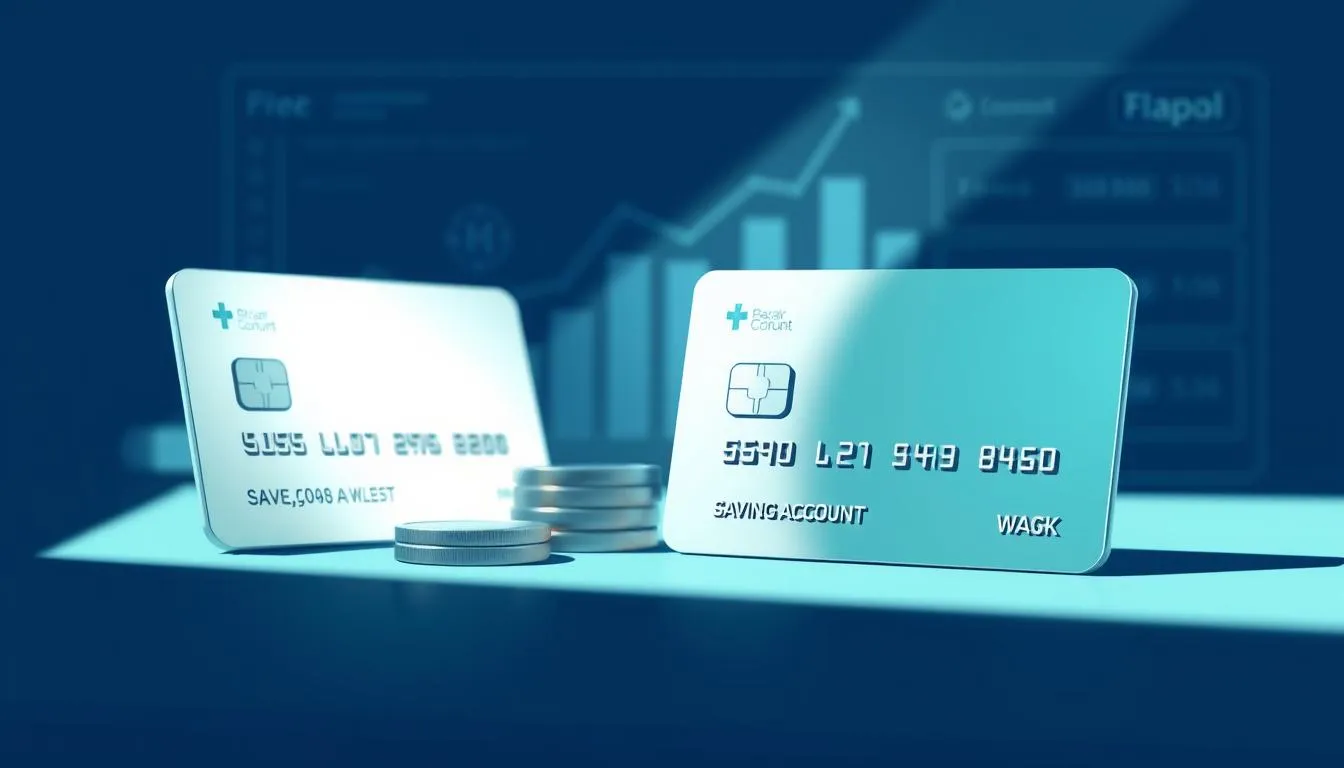Did you know the U.S. personal savings rate fell to just 4.10% at the end of 2023? That low number shows many Americans struggle to build cushions, even when they earn enough to set some cash aside.
Making saving automatic turns a hard habit into a background task. Banks and apps let you split direct deposit, set recurring transfers, or use round-ups so spare change moves to the right account without thinking.
Common tools include goal buckets, scheduled transfers, round-ups, and micro-investing services like Acorns, Stash, and Betterment. Some banks, such as Ally and Huntington, add features that move round-ups or fund goals once thresholds are met.
Why this works: routing a small part of each paycheck or purchase removes friction and builds consistency. Over time, regular deposits plus compound interest can create meaningful progress toward your future.
Later in this guide youll map cash flow, pick a transfer cadence, and test settings so the system fits your personal finance plan and adjusts as your life changes. To organize and track your automated savings alongside other financial goals, consider using top money manager apps for budgeting and savings that can provide comprehensive oversight of your financial automation strategy.
Key Takeaways
- Automatic transfers make saving money a simple, repeatable part of your plan.
- Direct deposit splits, round-ups, goal buckets, and micro-investing are the main options.
- Consistency beats timing set it and let regular deposits compound over time.
- Real tools from Ally, Huntington, Acorns, Stash, and Betterment show how banks integrate this feature.
- Start small, pick a cadence, and review settings so the approach stays effective as life changes.
What is savings automation and why it works today
Automating savings means earmarking a fixed amount or percentage and scheduling it to move from your checking account into a separate account on a regular routine.
The set-it-and-forget-it advantage is simple: once you set automatic transfers, the chosen amount leaves before you can decide to spend it. This reduces the value-action gap that trips up many budgets.

The set it and forget it advantage for busy budgets
Link transfers to each pay period or to a fixed day each month so the plan matches your cash flow and expenses. Banks and apps let you pause, edit, or increase rules from a dashboard when life changes.
How automation beats procrastination and impulse spending
Moving money out of checking before you see it short-circuits Ill do it later. That makes impulse buys less likely and keeps your goals on track.
“Automating $100 per week in her early 20s quietly built several thousand dollars in a year.” Melanie Lockert Source: Melanie Lockert
- Start small; modest amounts add up when repeated.
- Do brief management check-ins so passivity doesnt mean neglect.
- Use the tool that fits your workflowdirect deposit split, round-ups, or recurring transfers.
Savings automation: the core methods that actually move money
You can pick from several reliable systems that quietly shift cash into your goals. Each method suits different pay schedules and habits, so choose one that matches your cash flow.
Direct deposit splits from your paycheck into savings
Direct deposit lets you send a fixed amount or percentage of each paycheck straight into a savings account. For example, 10% of a $3,000 paycheck equals $300 moved before you see it. This creates momentum and keeps money out of reach for everyday spending.
Recurring transfers from checking to savings
Schedule a transfer from your checking account weekly, biweekly, or monthly to match pay days. Set a modest amount so the transfer doesnt strain bills. Timing to payday reduces the chance youll miss contributions.
Round-up programs tied to your debit card
Round-ups round purchases to the nearest dollar and move spare change into an account. Some banks, like Ally, hold round-ups and transfer them once at least $5 is reached to avoid tiny transactions.
Goal-based buckets and multiple accounts
Create separate accounts for emergency, travel, or a down payment so each amount shows clear progress. Many banks offer built-in buckets you can fund on a schedule.
Micro-investing spare change
Apps such as Acorns, Stash, and Betterment link to your account, round purchases, and invest the difference into diversified portfolios. Returns fluctuate, but small steady contributions add up over time. For a comprehensive comparison of these and other investment platforms, see our detailed guide to top micro-investing platforms for small investments.
- Start with a workable percentage so transfers build habit without overdrafts.
- Use your banks native tools when possible and review fees and settings regularly.
Choose the right accounts before you set automatic transfers
Pick accounts that help your plan work for you. The right bank and account determine how fast deposits grow and how easy it is to access funds when you need them.

High-yield vs. standard options
High-yield savings accounts often offer higher APYs than brick-and-mortar banks. Online banks cut overhead and pass returns to customers, so the same deposit earns more over time.
Standard savings accounts may give easier in-branch access. Choose based on whether you need quick withdrawals or better interest on the same amount you plan to move.
Use a separate bank to reduce spending temptation
Keeping goal money at a different bank creates a mental barrier that makes impulse transfers back to checking less likely.
Alternatively, many banks offer labeled buckets inside one account so you can track multiple goals while keeping one APY across all accounts.
- Compare APYs, fees, and transfer limits before you open an account.
- Link only the required checking account for transfers to avoid extra temptation and complexity.
- Pick the account you will actually use ease of setup matters as much as yield.
| Feature | High-yield (online) | Standard (local bank) |
|---|---|---|
| Typical APY | Higher competitive online rates | Lower but widely available |
| Access | Online transfers, mobile app | In-branch withdrawals, ATM access |
| Impulse control | Better when kept separate | Higher risk if linked to debit cards |
| Buckets/Goals | Often supported via labels | Some banks offer goal tools |
For a quick guide to setting recurring transfers once you pick an account, see how to grow your savings with automatic.
How to set automatic transfers step by step
Map your paychecks and recurring bills first; then pick an amount or percentage that fits without strain.
Map income, expenses, and a target
Start by listing monthly income and fixed expenses. Subtract bills to see what money remains for goals.
Pick a realistic amount or percentage that wont cause overdrafts. Use two months of bank statements if your income varies.
Pick a frequency that matches cash flow
Choose weekly, biweekly, or monthly so transfers line up with your paycheck. Freelancers can pick quarterly or variable dates tied to receipts.
Link checking and savings; schedule the date
Link your checking account to a savings account or set a direct deposit split at work. Schedule the first transfer the day after payday when balances are highest.

Test, track, and adjust without breaking your budget
Run the first two to three cycles and track results. Add a small buffer in checking so automated transfers clear even if bills spike.
- Keep a simple record of accounts and rules so you can edit quickly.
- If income varies, set a lower monthly transfer and add occasional top-ups when cash flow is strong.
- Set a quarterly reminder to review and raise the transfer as your finance picture improves.
Align automation with your financial goals
Assigning purpose to each transfer helps money move toward the future you want. Give each target a name and a timeline so deposits feel meaningful rather than invisible.
Emergency fund, down payment, education, and travel goals
Identify top goals like a three-to-six-month emergency fund, a home down payment, college costs, or a big trip.
Decide how much each goal needs and the time horizon in years. Back into a monthly transfer that fits your real cash flow.
Naming accounts and buckets to stay motivated
Use named buckets or separate accounts so each goal shows progress at a glance. Labels like “Roof Fund” or “Trip 2026” keep momentum during slow months.
Consider prioritizing the emergency fund first to protect your future, then reallocate that transfer to the next goal once its fully funded.
- Automate savings to each goal on different dates if that smooths cash flow across the month.
- Add milestone markers and motivational names to keep focus.
- Review timelines quarterly and increase transfers modestly when income rises.
- Keep rules simple so you maintain them consistently through the year.
“A named goal turns vague intentions into measurable wins.”
Advanced ways to automate and accelerate saving
Workplace rules, reward redirects, and windfall routing can all speed progress with minimal effort.
Employer retirement deductions and matches
Enroll in payroll deductions so a portion of each paycheck goes straight into your retirement account before it hits your checking account.
Aim to capture the full employer match skipping the match is effectively leaving free money behind. For broader automation strategies that can help manage multiple financial tools and subscriptions in your overall financial plan, explore our guide to subscription-based financial tools that simplify your finances.
Cash-back card rewards routed to savings
Set your card to deposit cash-back rewards into a savings account each month.
This turns reward points into real progress toward your goals without changing spending habits.
Funnel windfalls and use bill autopay
Make a rule to send bonuses and tax refunds directly to a chosen account. Big deposits can jump-start a fund.
Also, use autopay for fixed bills to avoid late fees that erode your balance.
- Set a small extra transfer or round-up each month as a gentle boost.
- Keep a simple plan document listing deposits, transfers, and due dates so you can tweak settings when income changes.
“Skipping the match is like leaving money on the table.”
Optimize, monitor, and troubleshoot your automatic savings
Set a routine review every three months to raise contributions when cash flow allows. Quarterly check-ins keep your plan current and let you increase the monthly amount as finances improve.
Quarterly check-ins to raise the transfer amount
Put quarterly reminders on your calendar to review performance and bump your monthly transfer when income is steady.
Small increases add up. Raise the amount by a fixed dollar or a percent so changes stay manageable.
Tracking tools and account dashboards to manage spending
Use your banks dashboard and a budgeting tool to track checking, cash flow, and goal progress in real time.
This management view helps you spot category spending and see which transfer dates work best with pay cycles.
Common pitfalls: overdrafts, variable income timing, low APY
Avoid overdrafts by keeping a checking buffer and staggering transfers across the month.
If income swings, schedule transfers after deposits clear or use a small base transfer plus occasional top-ups.
Check APYs and move funds to a higher-yield savings account at another bank if growth is slow. Keep a short note of every active rule (amount, date, account) to speed troubleshooting.
- Review linked cards and round-up rules annually.
- Consolidate or rename outdated goals to keep checking-savings clear and focused.
Conclusion
Bring it together, pick one clear rule and make it routine.
Automating small transfers, round-ups, or a direct deposit split is a proven way to close the intention-action gap that left the U.S. personal savings rate at 4.10% in 2023.
Start by choosing one tactic, set a workable amount, and schedule it to match your pay cycle. Use a higher-yield account and name the goal so progress is visible.
Keep the plan light: a few smart rules, a quarterly check-in, and small increases as your finances improve. Pick the method that fits your budget todaythen scale it.
Take one step now: split a paycheck, schedule a transfer, or enable round-ups with your card or bank. The benefit that matters most is steady progress, less mental load, and more confidence in your personal finance routine.
FAQ
What is automated savings and why does it work for busy people?
Automated transfers move money from your checking to a dedicated account on a schedule you choose. By setting a routine like matching your pay cycle you remove the temptation to spend and make progress toward goals without thinking about it.
How do direct deposit splits differ from recurring transfers?
Direct deposit splits route part of your paycheck straight to another account before money hits checking. Recurring transfers pull funds after deposit. Both reduce friction, but splits keep cash out of easy reach immediately.
Can round-up programs and micro-investing really add up?
Yes. Round-ups round card purchases to the next dollar and sweep spare change into a fund or portfolio. Over months, small increments compound and can build meaningful balance without changing daily habits.
Should I use a high-yield account or a standard savings account?
A high-yield account boosts returns and slows erosion from inflation. Use a separate bank or online account to reduce spending temptation, while keeping a low-friction standard account for short-term needs.
How do I decide how much or what percentage to transfer?
Map your income and fixed expenses, then choose a target amount or percentage that wont trigger overdrafts. Start small if needed and increase each quarter as you tighten your budget.
What frequency should I pick for transfers?
Match the transfer cadence to your paychecks weekly or biweekly for hourly income, monthly for salaried pay. Aligning dates prevents cash-flow squeezes and keeps transfers predictable.
How do I link accounts and schedule the first transfer?
Log in to your bank, add the destination account by routing and account numbers, verify micro-deposits if required, then set the amount, frequency, and start date. Test with a small transfer first.
How can I automate windfalls, like bonuses or tax refunds?
Set rules with your bank or use budgeting apps to route a percentage of deposits labeled bonus or refund straight into a savings bucket. This prevents splurging and accelerates goals.
Can employer retirement deductions and employer matches be automated too?
Yes. Contributions to 401(k) and similar plans are typically handled via payroll. Elect your contribution rate and verify any employer match so retirement saving happens before you spend the money.
How often should I review and adjust my transfers?
Perform quarterly check-ins. If income or expenses change, raise or lower transfers to stay on track. Use dashboards and tracking tools to monitor progress and spot potential overdraft risks.
What common pitfalls should I watch for?
Overdrafts from poorly timed transfers, variable income that leaves low balances, and low APY that erodes purchasing power. Keep a buffer in checking and choose accounts with competitive yields.
Can rewards from credit cards be routed to savings automatically?
Some card issuers let you redeem cash-back into a linked bank account or brokerage. Set up automatic redemptions when possible so rewards boost your goals without manual steps.
How do goal-based buckets and naming accounts help?
Labeling accounts for specific goals emergency fund, down payment, vacation keeps you focused and motivated. It also makes it easier to route transfers to the right place automatically.
What tools can help me track and manage automated transfers?
Use bank dashboards, mobile apps, and budgeting tools like Mint or You Need a Budget to view scheduled transfers, track balances, and forecast progress toward targets.
Is it safe to keep all my cash in an online bank or app?
Choose FDIC-insured banks and reputable fintech platforms. Diversify between banks if you want extra separation, and keep emergency cash accessible in a low-friction account to cover unexpected expenses.
